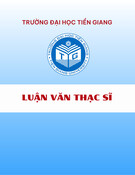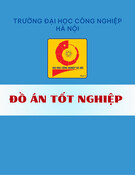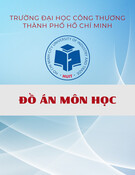
MINISTRY OF EDUCATION AND
TRAINING
VIETNAM ACADEMY OF
SCIENCE AND TECHNOLOGY
GRADUATE UNIVERSITY SCIENCE AND TECHNOLOGY
-----------------------------
BUI VAN TUYEN
DYNAMIC OF FGM BEAMS WITH POROSITIES IN
THERMAL ENVIRONMENT UNDER MOVING LOAD
Major: Engineering mechanics
code: 9520101
SUMMARY OF DOCTORAL THESIS
IN MECHANICAL ENGINEERING AND ENGINEERING
MECHANICS
Hanoi – 2018

The thesis has been completed at: Graduate University Science and
Technology – Vietnam Academy of Science and Technology.
Supervisors: 1. Assoc. Prof. Dr. Nguyen Dinh Kien
2. Dr. Tran Thanh Hai
Reviewer 1: Prof. Dr. Hoang Xuan Luong
Reviewer 2: Assoc. Prof. Dr. Tran Minh Tu
Reviewer 3: Assoc. Prof. Dr. Phan Bui Khoi
Thesis is defended at Graduate University Science and Technology-
Vietnam Academy of Science and Technology at…o’clock...’, on
………. ,…….…, 2018
Hardcopy of the thesis be found at :
- Library of Graduate University Science and Technology
- Vietnam national library

1
INTRODUCTION
1. Relevance of the thesis topic
The effect of porosities which can be occurred within FGMs
during the process of sintering has been investigated recently [16, 17,
18, 19]. Due to FGM beams are often used in thermal environment,
investigation on the influence of temperature on free vibration of
FGM beams has been studied by several authors [20, 21]. To the
author’s best knowledge, to the date only Wang and Wu considered
forced vibration of FGM beam in thermal environment under moving
loads [22], in which dynamic response of FGM beam under a
harmonic moving load has been studied by Lagrange method. It
should be emphasized that in the authors [22] studied axially FGM
perfect beams (without porosities), and only the case of uniform
temperature is considered. Mathematically, the uniform temperature
distribution is a special case of nonlinear temperature field, and it is
relatively simple from computational point of view. Investigation on
vibration of FGM beams in thermal environment thus is important
from both the research and practical points of view.
2. Thesis objective
This thesis aims to develop finite element models for studying
vibration of FGM porous beams in thermal environment under
moving loads.
3. Scope
The thesis focuses on two-phase transverse FGM beams forming
from ceramic and metal. The external loads considered in the thesis
are the constant speed moving forces and moving harmonic forces.
4. Research methods
Both analytical method and finite element analysis are employed
in the thesis. The analytical method is used to derive equations of
motion for the beam, and the finite element method is then employed
to solve the governing equations and to determine the dynamic
characteristics of the beams.
5. Thesis organization

2
Beside Introduction section, the thesis contains 4 Chapters, a
Conclusion section and a list of publications relevant to the thesis.
References cited in the thesis are listed at the end of the thesis.
CHAPTER 1. OVERVIEW
1.1. FGM beams
Functionally graded materials (FGMs) can be considered as a
new type of composite material. These materials are often formed
from two or more constituent materials whose volume fraction varies
in one or more predefined spatial directions. FGMs overcome the
disadvantage problems such as delamination and stress concentration
which often seen in conventional composite materials. With such
advantages, FGMs have great potential in applications where the
operating conditions are severe, including spacecraft heat shields,
heat exchanger tubes, biomedical implants, flywheels, and plasma
facings for fusion reactors, etc. [24].
FGM beams, the structure considered in this thesis, are assumed
to be formed from two phases, metal and ceramic. The volume
fraction of constituents is considered to vary in a spatial direction,
namely in the beam thickness, by a power-law distribution as [3]
,
1
2
,2
1
2
n
c c m
hz
z
V V V
h
h
(1.1)
where Vc, Vm are, respectively, the volume fraction of ceramic and
metal; z is the co-ordinate in the thickness direction, and n is material
grading index, defining the material distribution of the constituents.
In addition to the distribution (1.1), several authors also considered
the variation of the material properties in axial or both axial and
thickness directions.
1.2. Investigations on FGM beams
1.2.1. Mechanical behavior of FGM beams
The traditional analytical methods, especially Galerkin method,
are employed by researchers in studying mechanical behavior of
FGM beams [35-41]. Finite element method (FEM) is also widely
used to study the behaviour of FGM beams. Several finite element
beam models for analysis of FGM beams have been proposed in

3
recent years [59-64], for example the works by Alshorbagy et al. [25]
Mohanty el al. [66, 67], Gan and Nguyen [70, 71, 72]. Eltaher et al.
[73, 74] considered the physical neutral axis position in the
derivation of a finite element model for free vibration analysis of
macro/nano FGM beams. Jin and Wang [76] used the quadrature
method to derive stiffness and mass matrices for free vibration
analysis of FGM beams. Based on the first-order shear deformation
theory, Frikha et al. [77] developed a mixed finite element
formulation for bending analysis of FGM beams.
1.2.2. FGM beams with porosities
Porosities can lower the material stiffness, and as a result they
reduce the ability to resist external loads of structural components.
Wattanasakulpong and Ungbhakorn [18], Wattanasakulpong and
Chaikittiratana [19] proposed a simple model for free vibration
analysis of FGM porous beams, in which the porosity volume is
equally divided to both the ceramic and metal phases. The model has
been employed by Ebrahimi and Zia [79] to study nonlinear free
vibration of FGM Timoshenko beams. Chen et al. [16] proposed a
concept “porosity coefficient” in their study of bending and stability
of FGM porous beams. The model in [16] is then extended by the
authors to nonlinear vibration of sandwich beams with FGM porous
core [80], and free and forced vibration of FGM Timoshenko beams
with porosities [81]. Shafiei and Kazemi [82] studied stability of
nano/micro FGM porous beams with modification of the poroposity
model in [18, 19] by considering non-uniform distribution of
porosities in the beam cross sections. The non-uniform distribution
of porosity model has also been employed to study vibration of 2D-
FGM beams [83].
1.2.3. FGM beams in thermal environment
Chakraborty et al. [84] derived a finite element Timoshenko
beam model for studying wave propagation in sandwich beams with
FGM core in consideration of a uniform temperature rise. Based on
the finite element method, Bhangale and Ganesan [85] investigated
the effect of temperature on natural frequency and loss factor of
FGM sandwich beams with visco-elastic core. Ching and Yen [86]
presented a numerical solution for the themo-mechanical

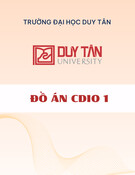
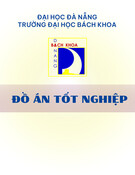
![Thiết kế động cơ nén khí: Bài tập lớn [chuẩn nhất]](https://cdn.tailieu.vn/images/document/thumbnail/2025/20250808/kimphuong1001/135x160/92301754624152.jpg)
![Bài tập lớn nồi hơi - tua bin hơi tàu thủy [chuẩn nhất]](https://cdn.tailieu.vn/images/document/thumbnail/2025/20250804/kimphuong1001/135x160/51011754302684.jpg)
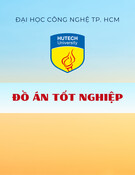
![Thiết kế hộp giảm tốc hai cấp: Đồ án môn học [chuẩn nhất]](https://cdn.tailieu.vn/images/document/thumbnail/2025/20250730/vijiraiya/135x160/99241753869588.jpg)
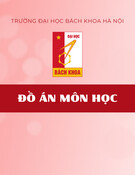



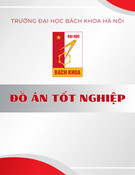
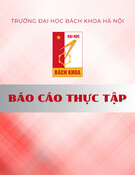
![Thiết kế cung cấp điện cho tòa nhà B2 Đại học Vinh: Đồ án môn học [chuẩn nhất]](https://cdn.tailieu.vn/images/document/thumbnail/2025/20251212/phanduchung10072004@gmail.com/135x160/65851765594609.jpg)
